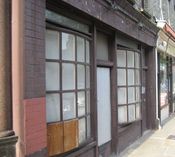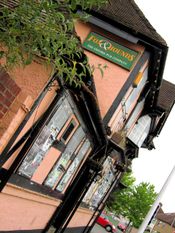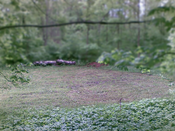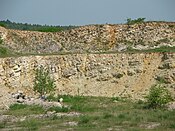Key:disused:*
| Description |
|---|
| Namespace for features that have fallen into disuse, but which are still useful for navigation and visible in the landscape. |
| Group: lifecycle |
| Used on these elements |
| See also |
| Status: in use |
| taginfo: disused:* |
The disused:*=* lifecycle prefix is used on tags that relate to features that are in a reasonable state of repair but which are currently unused. Examples include vacant or boarded-up dusty shop buildings or unused parking lots.
For features which can only be returned to use with significant repair efforts, use the prefix abandoned:*=* instead. Use of disused as a simple tag (for example disused=yes) is now discouraged for many features.
How to tag
Add the namespace disused:*=* as a prefix to all keys which are no longer relevant to the current state of an object. You should treat all the tags on an object as a set of facts about the object, and prefix the keys of those facts which are no longer true as a result of the disuse. For example, a concrete parking area which is no longer used for parking cars but which still carries a name sign might be tagged as
which makes it unavailable to programs which find parking, and unlikely to be displayed as parking in any default renderings. The name is still relevant, and will still be searchable. If the area is opened up again, it's a simple matter to undo the prefixing.
Examples
| Image | Tagging | Description |
|---|---|---|

|
disused:shop=yes / disused:shop=convenience / ... | A closed-down shop of some sort. If the type of shop it used to be is known, substitute the appropriate value from shop for yes. "disused:" prefix is very useful here as disused shop is no longer a shop. |

|
disused=yes + building=* | A disused building. It is better to use simple tag disused=yes as disused building is still a building. Note that with simple disused=yes tag One feature, one OSM element rule becomes even more useful.
disused:building=* also can be used but note that such tagging is unlikely to be supported and adding also building=* is a valid edit. |

|
disused:amenity=pub disused:operator=The Oxford Pub Company name=Fox & Hounds |
Boarded-up disused public house. It no longer has an operator as such - no beer is sold - but the name is still useful for navigation. |

|
railway=disused disused:railway=rail may be also added |
No longer used railway line. Tracks not degraded but may be overgrown. Note that disused railway is typically tagged using a tagging scheme different to lifecycle prefixes. |
| railway=disused + disused=tram disused:railway=tram may be also added |
No longer used tram line. Tracks not degraded but may be overgrown. Note that disused railway is typically tagged using a tagging scheme different to lifecycle prefixes. | |

|
disused:leisure=pitch | Disused pitch, now somewhat overgrown. |

|
landuse=quarry + disused=yes | Disused quarry. Note that lifecycle scheme is not used here - that is because quarry describes landscape feature, not company operating there. This is a rare case where disused=yes is still recommended. |
Former use (as a simple tag)
Using disused=yes as a simple tag is not always correct. It was used for the same purpose as described above, but the syntax was unhelpful because automated consumers of the data would have had to be rewritten.
- Some disused features will be tagged in the database as disused=yes. This tag alone is not always sufficient to describe the object's status consistently.
- Make any tags which no longer have current meaning as a result of the disuse unavailable to software. This can be done by prefixing their keys with the namespace disused:*=* rather than using disused=yes.
Updating older tagging
Uses of the simple tag should ideally be updated as follows:
| Older scheme (partially deprecated) | Current scheme (recommended) |
|---|---|
| amenity=pub disused=yes |
disused:amenity=pub |
| amenity=parking capacity=20 disused=yes |
disused:amenity=parking disused:capacity=20 |
| landuse=quarry disused=yes |
landuse=quarry disused=yes |
| building=house disused=yes |
building=house disused=yes |
Note that for some objects disused=yes is a good idea. For example disused quarries should be tagged landuse=quarry + disused=yes, not with disused:landuse=quarry. The difference is that shop=* describes only active shops (where you may buy things or services) while landuse=quarry describes type of landscape, not a company operating there. The same applies also to for example man_made=adit or building=*.
Disused railways
Disused rail lines have a special method of tagging which is in use:
Possible tagging mistakes
See also
- abandoned:*=* - Namespace for features that have been abandoned by their owner, but which are still useful for navigation and visible in the landscape. Immediate reuse is not planned, and they may have fallen into disrepair
- disused=yes - A feature that is disused but in a reasonable state of repair. Discouraged in some situatons
- shop=vacant - Shop that is currently not being used
- opening_hours=closed - Is used to indicate that something is closed (temporarily or permanent)
- Lifecycle prefix
- Comparison of life cycle concepts, for a discussion of how to tag features through their life-cycle from proposal through operation to complete obliteration.
